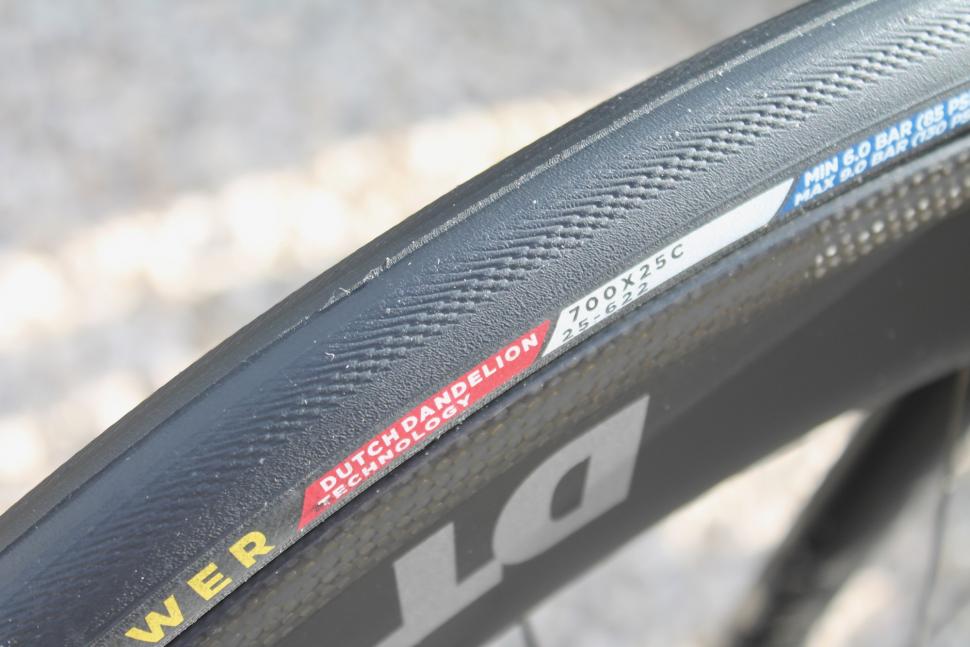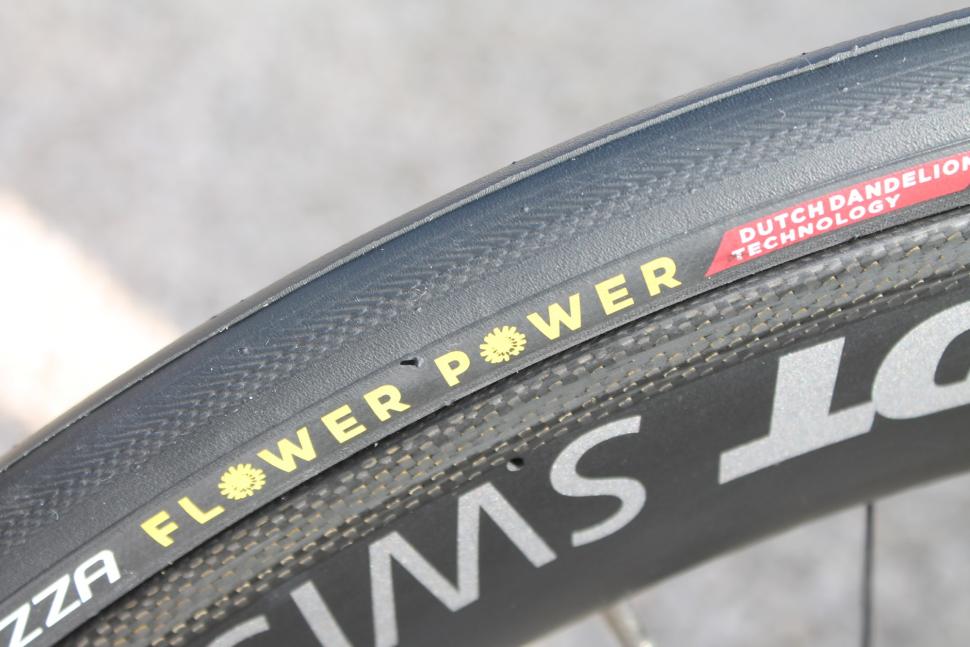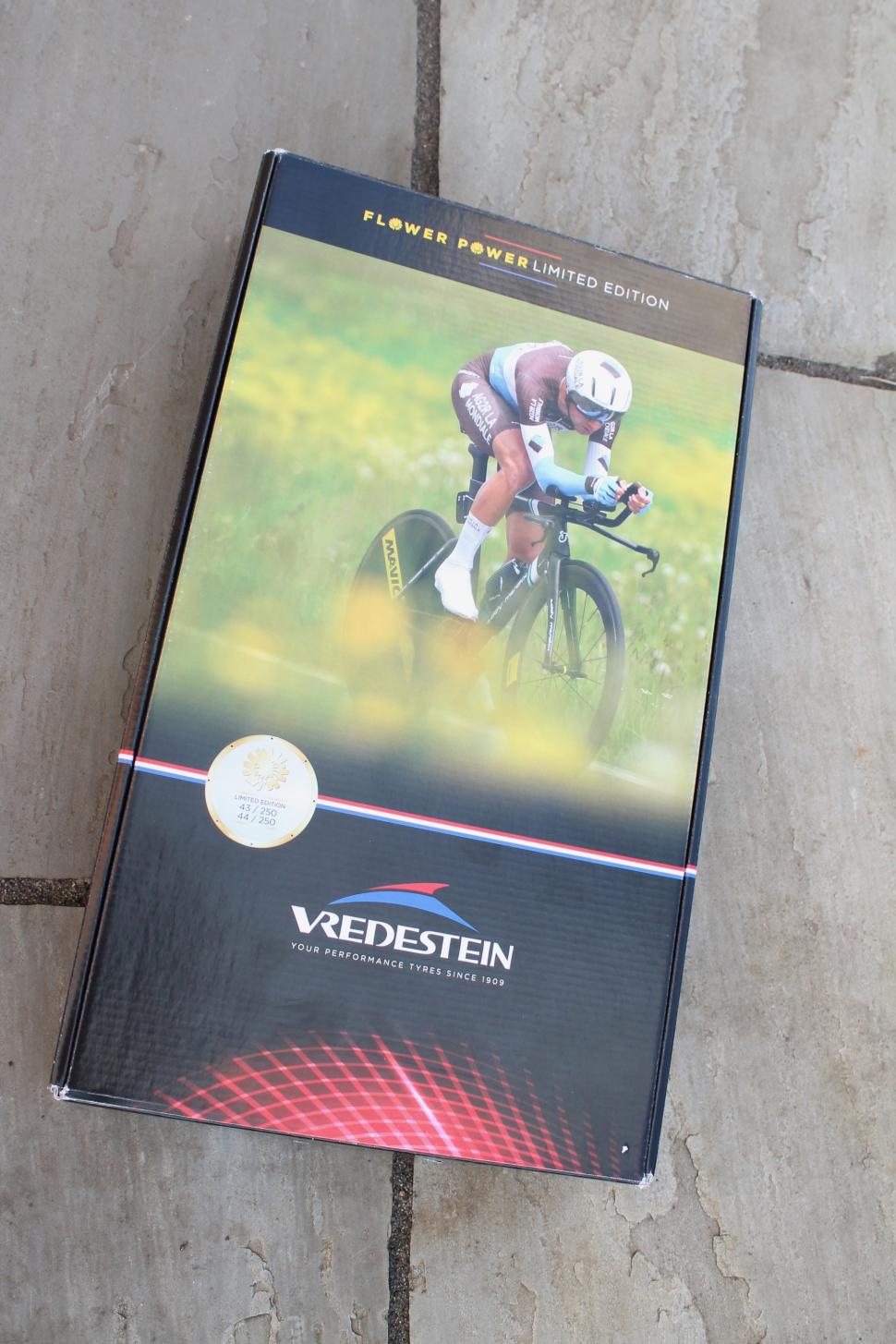- News
- Reviews
- Bikes
- Accessories
- Accessories - misc
- Computer mounts
- Bags
- Bar ends
- Bike bags & cases
- Bottle cages
- Bottles
- Cameras
- Car racks
- Child seats
- Computers
- Glasses
- GPS units
- Helmets
- Lights - front
- Lights - rear
- Lights - sets
- Locks
- Mirrors
- Mudguards
- Racks
- Pumps & CO2 inflators
- Puncture kits
- Reflectives
- Smart watches
- Stands and racks
- Trailers
- Clothing
- Components
- Bar tape & grips
- Bottom brackets
- Brake & gear cables
- Brake & STI levers
- Brake pads & spares
- Brakes
- Cassettes & freewheels
- Chains
- Chainsets & chainrings
- Derailleurs - front
- Derailleurs - rear
- Forks
- Gear levers & shifters
- Groupsets
- Handlebars & extensions
- Headsets
- Hubs
- Inner tubes
- Pedals
- Quick releases & skewers
- Saddles
- Seatposts
- Stems
- Wheels
- Tyres
- Health, fitness and nutrition
- Tools and workshop
- Miscellaneous
- Cross country mountain bikes
- Tubeless valves
- Buyers Guides
- Features
- Forum
- Recommends
- Podcast
TECH NEWS
 2020 Vredestein Fortezza Flower Power tyres - 2.jpg
2020 Vredestein Fortezza Flower Power tyres - 2.jpgJust in: Vredestein Fortezza Flower Power tyres
We told you back in January about Vredestein's Fortezza Flower Power tyres that are made using rubber that's derived from the roots of Russian dandelion, and we've been using a pair for riding here at road.cc for the past couple of weeks. The dandelion rubber is used only for the shoulders of the tyres.
We won't run a review because the tyres are available in such limited numbers, although the technology could become more widespread in the future. Studies are currently exploring whether mass production is viable.
Vredestein was the first company to announce that it would be using this type of rubber, having first showed its tyres at Eurobike in 2017, although Continental has since said that it is doing something similar.
Why go with rubber extracted from the roots of dandelions? Vredestein, working with Wageningen University and Research (WUR), says that the compound used provides better grip than traditional compounds thanks to a higher concentration of natural resin, along with lower rolling resistance. Plus, Russian dandelion can be grown easily and quickly in Europe (it can be harvested five times per year), making the EU less dependent on the importation of natural rubber.
Get more details on the technology.
Only 250 Vredestein Fortezza Flower Power tyres are being offered in this limited edition – 125 pairs – each tyre individually numbered. They have a 120tpi casing and are 700C x 25mm only. The weight is 240g per tyre.
In use, the Vredestein Fortezza Flower Power tyres do feel tacky and grippy, although you'd be very hard pressed to tell these apart from standard Fortezzas (Vredestein says the difference is marginal). As mentioned up top, we won't run a review but this is interesting and sustainable new tech that might become more of a feature in the market as time goes on.
Vredestein's UK distributor is www.i-ride.co.uk.
Mat has been in cycling media since 1996, on titles including BikeRadar, Total Bike, Total Mountain Bike, What Mountain Bike and Mountain Biking UK, and he has been editor of 220 Triathlon and Cycling Plus. Mat has been road.cc technical editor for over a decade, testing bikes, fettling the latest kit, and trying out the most up-to-the-minute clothing. He has won his category in Ironman UK 70.3 and finished on the podium in both marathons he has run. Mat is a Cambridge graduate who did a post-grad in magazine journalism, and he is a winner of the Cycling Media Award for Specialist Online Writer. Now over 50, he's riding road and gravel bikes most days for fun and fitness rather than training for competitions.
Latest Comments
- eburtthebike 2 sec ago
I well remember the BBC rolling out their environment correspondent to criticise LTNs.
- robgru76 37 min 10 sec ago
I made a complaint to the CMA last week about monopoly like behaviour/price gouging but received a response the next day saying they could not...
- IanGlasgow 50 min 10 sec ago
Agreed. I won't consider any product that doesn't use USB-C anymore. I usually have a USB-C cable and a battery bank in my toolkit which will...
- David9694 47 min 8 sec ago
Pensioner left with £1,300 vet bill after cyclist ran over dog in Swalecliffe, near Whitstable, and fled...
- Terry Hutt 6 hours 10 min ago
Those models aren't miserable etc. They're hungry.
- Bungle_52 13 hours 17 min ago
This was a failure to give way at a roundabout so although it was relatively straightforward to anticipate and avoid there is traffic law to...
- wtjs 14 hours 37 min ago
she questioned what Police Scotland is doing to "deter dangerous driving and protect cyclists"...
- wtjs 14 hours 47 min ago
I've got a few reports coming up to one year where I've been told that they will take action but I don't know what action yet. I'll let you know...



Add new comment
9 comments
Many of my tires are made from the sap of the Hevea brasiliensis... commonly known as the "Rubber Tree."
This is not "interesting and sustainable new tech" This is pure marketing for people who are driven by emotion.
Well, yes and no. There's enough concern about tropical forest clearance for WWF to be campaigning for a more sustainable rubber industry. To an extent rubber has the same problem as palm oil.
When you add in the long-distance transport cost, creating a material nearer to the huge markets in the developed world might make a lot of sense. As ever with environmental issues though, there's a lot of devil in the detail - eg what would this mean for the economies of current rubber producing nations?
So although emotionally-driven marketing victims might be the initial customers, this is well worth a try. It may never get to the point where it can compete with standard rubber, but we won't know without trying. So from me, kudos to Vredestein.
Lots of different plants have been used as a source of latex. Parthenium argentatum, commonly known as the guayule, which grows wild in northern Mexico and the Big Bend region of Texas. It was actually used as a source during WW II when southeast Asia was cut off from Britain and the USA.
But once latex from the plantations of southeast Asia was available, people switched back. I have no problem with people trying alternative sources of raw materials. I just don't like the green wash crap.
I had some friends who were of Die Grünen persuasion. They ran "bio diesel" in a pre-DPF/DEF pickup. I warned them that they needed to change the oil much more frequently based on oil analysis.
Advice ignored. Engine ruined due to lubrication failure due to dilution lubricant from fuel blow by. Total cost and environmental damage exceeded use of mineral diesel fuel. Friends did not like the crow pie they had made for themselves.
Vredestein is a division of Apollo Tyres Ltd. which is an Indian company. They manufacture products in India and Europe. Not sure where these tyres were made.
But let us look at this rationally. The greatest environmental cost of tyres is not the production and shipping of rubber.
I have a favorite road tyre. I like them because they seem to be resistant to road hazzards which destroy a lot of tyres from the other brand I have been riding. A tyre that lasts a full year has a lower environmental impact than one made from organic cotton, Guayule rubber, and processed with solar energy which needs to be replaced several times a year.
Not to mention the very high cost of injury caused by tyre failure or poor tyre performance. The winter tyres on my car are the tyres which scored the highest in performance tests the year I bought them.
The manufacturer likes to tout their environmentally friendly practices. I buy them because they grip on ice. Wrecking my car will have a very high environmental cost,
You expect several times less durability? Go on. You expect us to wreck our bikes, or in some other way make the remainder of this prattle relevant? Go on.
Perhaps I wasn't clear enough. My point is that there is a lot of "Green Wash" or "Green Marketing" to try and convince consumers that they should pay a premium for a product because it is "Green". Most of it is pure bilge water.
The truth is that the overall environmental impact is much more complex than a marketing slogan, or which plant you use as a source for latex, or whether you ship completed tyres from Asia to Europe or North America, or if you used 100% European grown latex which you ship to India to build your tyres or Indian grown latex which you ship to Europe to build your tyres.
However your point seems to be based on your supposition about durability - is there some data we should be looking at ?
I am not questioning the durability of any tyre made from any source of latex. What I am pointing out is that the source of the latex is only one of the items which determines the environmental impact of a tyre.
Oh indeed, agree with you on that - I was thinking about when you said
..so given those points effecting the environmental impact then a product with equivalent durability, performance and MTBF, having locally produced source materials (local to production and distribution - get your next point about the mix of those - which would presumably be one of the main the incentives here) which are less resource intensive to cultivate would be preferable and - loath to say it - more 'green'. They also claim improved, not just equivalent, performance. I don't like the general green washing of all and sundry either, but this does at least have the potential to have less impact and provide a better product... but, yeah, also advertising, true dat.
Let's hope the dandelion doesn't make the susceptible to sudden gusts of wind.